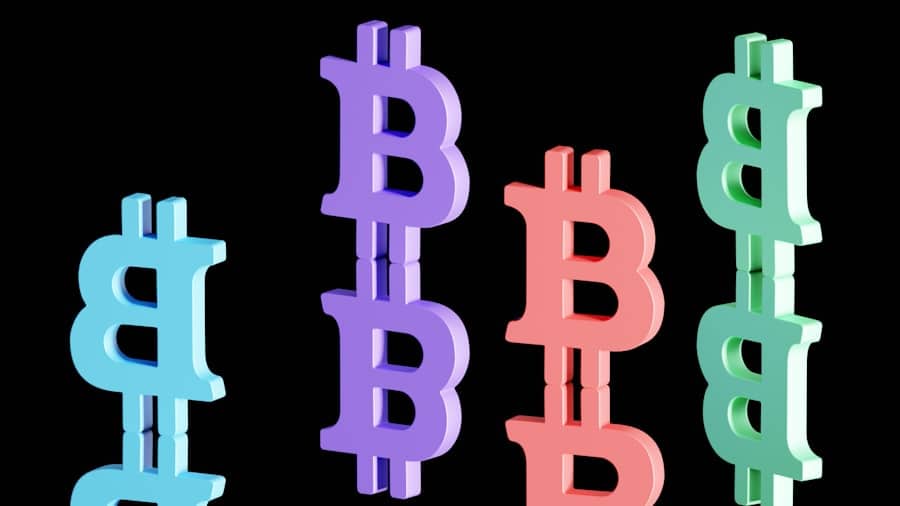Blockchain technology is a decentralized digital ledger system that records transactions across multiple computers in such a way that the registered transactions cannot be altered retroactively. This technology operates on a peer-to-peer network, where each participant, or node, has access to the entire database and its complete history. The integrity of the data is maintained through cryptographic hashing, which ensures that any attempt to alter a transaction would require an immense amount of computational power, making fraud nearly impossible.
Each block in the chain contains a list of transactions, a timestamp, and a cryptographic hash of the previous block, creating a secure and immutable chain of information. The decentralized nature of blockchain eliminates the need for intermediaries, such as banks or payment processors, which traditionally facilitate transactions. This not only reduces costs but also enhances the speed of transactions.
In addition, blockchain technology is transparent; all participants can view the transaction history, which fosters trust among users. The implications of this technology extend beyond financial transactions; it has potential applications in various sectors, including supply chain management, healthcare, and voting systems. As organizations begin to recognize the transformative potential of blockchain, its adoption continues to grow, paving the way for innovative solutions in numerous industries.
Key Takeaways
- Blockchain is a decentralized, distributed ledger technology that allows for secure and transparent transactions.
- Cross-border payments face challenges such as high fees, long processing times, and lack of transparency.
- Blockchain revolutionizes cross-border payments by offering faster, cheaper, and more transparent transactions.
- Advantages of using blockchain for cross-border payments include lower costs, faster processing times, and increased security.
- Cryptocurrencies play a role in cross-border payments by offering a digital alternative to traditional currencies.
The Challenges of Cross-Border Payments
Cross-border payments have long been fraught with challenges that hinder their efficiency and accessibility. One of the primary issues is the complexity of the existing financial infrastructure. Traditional banking systems often involve multiple intermediaries, each adding layers of fees and delays to the transaction process.
For instance, when sending money from one country to another, a sender may have to navigate through several banks and payment processors, each taking a cut and extending the time it takes for funds to arrive at their destination. This convoluted process can lead to significant delays, sometimes taking several days for a transaction to be completed. Moreover, currency conversion adds another layer of complexity.
Exchange rates fluctuate constantly, and hidden fees can significantly impact the amount received by the recipient. Additionally, regulatory compliance varies from country to country, creating further complications for businesses and individuals engaging in international transactions. Anti-money laundering (AML) and know your customer (KYC) regulations require extensive documentation and verification processes that can slow down transactions and increase costs.
These challenges create barriers for individuals and businesses alike, particularly in developing countries where access to traditional banking services may be limited.
How Blockchain is Revolutionizing Cross-Border Payments

Blockchain technology is poised to revolutionize cross-border payments by addressing many of the challenges associated with traditional systems. By enabling direct peer-to-peer transactions without intermediaries, blockchain significantly reduces transaction times and costs. For example, using blockchain-based platforms like Ripple or Stellar allows users to send money across borders almost instantaneously, bypassing the lengthy processes associated with traditional banking systems.
This immediacy is particularly beneficial for businesses that rely on timely payments to maintain cash flow and operational efficiency. Furthermore, blockchain’s inherent transparency and security features enhance trust in cross-border transactions. Each transaction is recorded on a public ledger that can be audited by all parties involved, reducing the risk of fraud and errors.
This transparency is especially crucial in international trade, where trust between parties can be tenuous due to geographical distances and differing regulatory environments. By providing a secure and verifiable method of conducting transactions, blockchain fosters greater confidence among users, encouraging more businesses to engage in cross-border trade.
Advantages of Using Blockchain for Cross-Border Payments
The advantages of utilizing blockchain for cross-border payments are manifold. One of the most significant benefits is cost reduction. Traditional cross-border payment methods often involve high fees due to multiple intermediaries taking their share at each step of the transaction.
In contrast, blockchain allows for direct transfers between parties, minimizing or even eliminating these fees. For instance, companies like TransferWise (now Wise) leverage blockchain technology to offer lower-cost international transfers compared to traditional banks. Speed is another critical advantage.
Transactions on a blockchain can be completed in minutes or even seconds, compared to the days it may take through conventional banking channels. This rapid processing time is particularly advantageous for businesses that need to make quick payments to suppliers or receive funds from customers abroad. Additionally, blockchain’s ability to operate 24/7 means that transactions can occur at any time without being restricted by banking hours or holidays.
Another notable advantage is enhanced security. Blockchain’s cryptographic nature ensures that once a transaction is recorded, it cannot be altered or deleted without consensus from the network participants. This immutability protects against fraud and unauthorized access, making it a more secure option for cross-border payments than traditional methods that may be vulnerable to hacking or manipulation.
The Role of Cryptocurrencies in Cross-Border Payments
Cryptocurrencies play a pivotal role in facilitating cross-border payments through blockchain technology. Digital currencies like Bitcoin, Ethereum, and stablecoins such as USDC or Tether provide an alternative means of transferring value across borders without relying on traditional fiat currencies or banking systems. The decentralized nature of cryptocurrencies allows users to send funds directly to one another without intermediaries, significantly reducing transaction costs and times.
For example, Bitcoin has been used by individuals in countries with unstable currencies or restrictive banking systems as a means of preserving value and conducting transactions internationally.
Moreover, stablecoins provide a solution to the volatility often associated with cryptocurrencies by pegging their value to stable assets like the US dollar, making them more suitable for everyday transactions.
Additionally, cryptocurrencies can facilitate remittances for migrant workers sending money back home. Traditional remittance services often charge exorbitant fees that can consume a significant portion of the funds being sent. In contrast, using cryptocurrencies can drastically reduce these costs while providing faster transfer times.
Platforms like BitPesa (now known as AZA Finance) have successfully utilized cryptocurrencies to streamline remittance services in Africa, allowing users to send money home quickly and affordably.
Regulatory Considerations for Blockchain-Based Cross-Border Payments

As blockchain technology continues to gain traction in cross-border payments, regulatory considerations become increasingly important. Governments around the world are grappling with how to regulate cryptocurrencies and blockchain-based financial services while ensuring consumer protection and preventing illicit activities such as money laundering and fraud. The lack of a unified regulatory framework poses challenges for businesses operating in multiple jurisdictions.
Regulatory bodies are beginning to establish guidelines for cryptocurrency exchanges and blockchain-based payment platforms. For instance, in the United States, the Financial Crimes Enforcement Network (FinCEN) requires cryptocurrency exchanges to register as money services businesses (MSBs) and comply with AML and KYC regulations. Similarly, the European Union has proposed regulations aimed at creating a comprehensive framework for digital assets that would enhance consumer protection while fostering innovation.
However, regulatory uncertainty can stifle innovation in the blockchain space. Companies may hesitate to invest in new technologies or expand their services if they are unsure about future regulations or potential legal liabilities. Striking a balance between fostering innovation and ensuring regulatory compliance will be crucial as governments seek to harness the benefits of blockchain technology while safeguarding consumers and maintaining financial stability.
Case Studies of Successful Blockchain-Based Cross-Border Payment Solutions
Several companies have successfully implemented blockchain-based solutions for cross-border payments, demonstrating the technology’s potential to transform this sector. One notable example is Ripple Labs, which developed the RippleNet network designed specifically for facilitating international money transfers between financial institutions. RippleNet utilizes its native cryptocurrency, XRP, as a bridge currency to enable instant cross-border transactions with minimal fees.
Financial institutions using RippleNet have reported significant reductions in transaction times from days to mere seconds. Another compelling case study is Stellar Development Foundation’s Stellar network, which focuses on providing financial services to unbanked populations around the world. Stellar enables users to create digital wallets that can hold various currencies and facilitates low-cost cross-border transactions through its built-in decentralized exchange feature.
Organizations like MoneyGram have partnered with Stellar to allow users to send money internationally at lower costs compared to traditional remittance services. In addition to these examples, various startups are emerging with innovative solutions leveraging blockchain technology for cross-border payments. For instance, Veem offers a platform that allows businesses to send payments globally using blockchain technology while providing real-time tracking and transparency throughout the transaction process.
These case studies illustrate how blockchain is not just a theoretical concept but a practical solution that is already making waves in the realm of cross-border payments.
The Future of Blockchain in Cross-Border Payments
The future of blockchain technology in cross-border payments appears promising as more businesses and financial institutions recognize its potential benefits. As adoption increases, we can expect further innovations that enhance transaction speed, reduce costs, and improve security measures within this space. The integration of artificial intelligence (AI) with blockchain could lead to smarter payment solutions that automatically optimize transaction routes based on real-time data analysis.
Moreover, as regulatory frameworks evolve to accommodate blockchain technology and cryptocurrencies, we may see greater mainstream acceptance among consumers and businesses alike. Central banks are exploring central bank digital currencies (CBDCs), which could integrate blockchain principles while providing government-backed stability. The introduction of CBDCs could further streamline cross-border payments by enabling direct transfers between countries without relying on traditional banking systems.
The potential for increased efficiency, reduced costs, and enhanced security positions blockchain as a transformative force in global finance that could reshape how individuals and businesses conduct international transactions for years to come.
In the rapidly evolving landscape of financial technology, blockchain is increasingly being recognized for its potential to revolutionize cross-border payments. This transformative technology offers enhanced security, reduced transaction times, and lower costs, making it a compelling alternative to traditional banking systems. For those interested in exploring other innovative software solutions, you might find the article on best software for online arbitrage insightful. It delves into tools that optimize online trading, which, like blockchain, are reshaping how transactions are conducted in the digital age.
FAQs
What is blockchain technology?
Blockchain technology is a decentralized, distributed ledger that records transactions across multiple computers in a way that is secure, transparent, and tamper-proof.
How does blockchain technology work in cross-border payments?
Blockchain technology can be used to facilitate cross-border payments by providing a secure and efficient way to transfer funds across borders without the need for intermediaries such as banks. This can result in faster transaction times and lower fees.
What are the benefits of using blockchain for cross-border payments?
Some of the benefits of using blockchain for cross-border payments include faster transaction times, lower fees, increased transparency, and improved security. Additionally, blockchain technology can help to reduce the risk of fraud and errors in cross-border transactions.
What are some challenges of using blockchain for cross-border payments?
Challenges of using blockchain for cross-border payments include regulatory issues, scalability, interoperability with existing financial systems, and the need for widespread adoption of the technology.
What are some examples of companies using blockchain for cross-border payments?
Several companies are exploring the use of blockchain for cross-border payments, including Ripple, IBM, and SWIFT. These companies are developing blockchain-based solutions to improve the efficiency and cost-effectiveness of cross-border transactions.

